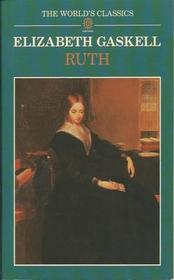From the back cover:
'Not a book for young people, unless read with somebody older' was one view expressed on the publication of Ruth, Mrs. Gaskell's second full-length novel, which deals explicitly with the issue of unmarried motherhood. Two of her male acquaintances even went so far as to burn their copies.
Ruth Hilton, an orphan and dressmaker's assistant, is seduced and heartlessly deserted by the wealthy Henry Bellingham. Mrs. Gaskell tells the story of Ruth's love for her child; her new life in the home of Thurston Benson, a dissenting minister; the misery caused by the tyrannical Mr. Bradshaw, in whose house she finds employment as a governess; and the cruel twist of fate that confronts her again with her worthless lover, with appalling consequences.
Ruth was in its own time a cause celebre, which contributed substantially to its author's growing reputation. Its heroine's betrayal and redemption are treated with the compassionate insight that typifies Mrs. Gaskell's handling of social issues, while the provincial setting is described with the precision of observation that we associated with her fiction at its best.
The text for this edition is based upon that of the first edition, published in three volumes in 1853.
'Not a book for young people, unless read with somebody older' was one view expressed on the publication of Ruth, Mrs. Gaskell's second full-length novel, which deals explicitly with the issue of unmarried motherhood. Two of her male acquaintances even went so far as to burn their copies.
Ruth Hilton, an orphan and dressmaker's assistant, is seduced and heartlessly deserted by the wealthy Henry Bellingham. Mrs. Gaskell tells the story of Ruth's love for her child; her new life in the home of Thurston Benson, a dissenting minister; the misery caused by the tyrannical Mr. Bradshaw, in whose house she finds employment as a governess; and the cruel twist of fate that confronts her again with her worthless lover, with appalling consequences.
Ruth was in its own time a cause celebre, which contributed substantially to its author's growing reputation. Its heroine's betrayal and redemption are treated with the compassionate insight that typifies Mrs. Gaskell's handling of social issues, while the provincial setting is described with the precision of observation that we associated with her fiction at its best.
The text for this edition is based upon that of the first edition, published in three volumes in 1853.




